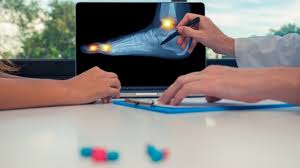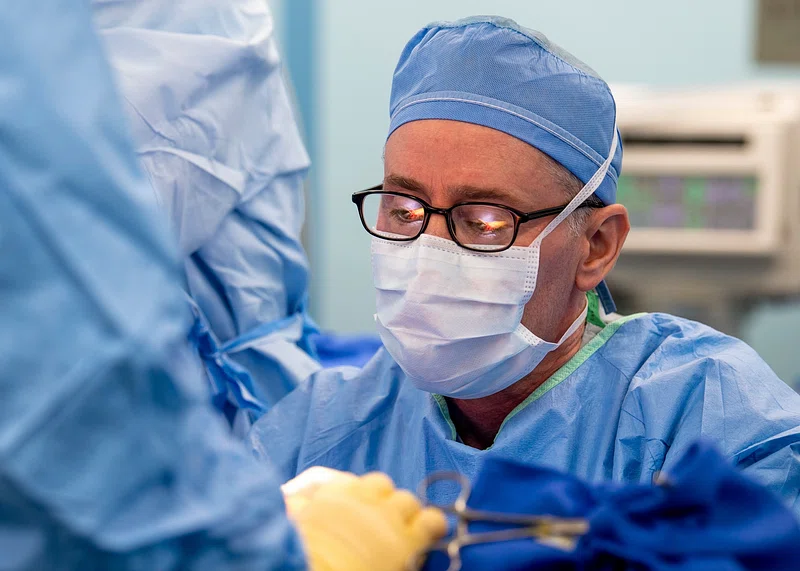Foot pain and deformities can significantly affect your mobility and quality of life. Traditionally, foot surgeries involved large incisions, long recovery times, and extensive pain management. However, minimally invasive foot surgery is revolutionizing the field of podiatry. This advanced approach allows podiatrists to treat various conditions with smaller incisions, less pain, and quicker recovery times.
At Garden State Foot & Ankle Group, we specialize in minimally invasive foot surgery techniques that minimize discomfort and maximize results. If you’re dealing with conditions such as bunions, hammertoes, or diabetic foot ulcers, our expert podiatrists in Toms River, NJ, can help you regain mobility with the least possible downtime.
What Is Minimally Invasive Foot Surgery?
Minimally invasive foot surgery (MIFS) is a modern surgical technique where podiatrists use small incisions and specialized instruments to correct foot problems. Unlike traditional open surgery, this method reduces trauma to the surrounding tissues, resulting in faster healing and minimal scarring.
Key Benefits of Minimally Invasive Foot Surgery
- Smaller incisions (typically 2-5 mm)
- Reduced post-operative pain
- Lower risk of infections
- Shorter recovery period
- Minimal scarring
- Less anesthesia required
At GSFA Group in Toms River, we ensure that each patient receives the latest and best podiatry treatment choices available.
Conditions Treated with Minimally Invasive Foot Surgery
1. Bunions
A bunion is a bony bump that forms at the base of the big toe. Traditional surgery requires a large incision, but minimally invasive techniques allow for bone realignment through tiny incisions, reducing recovery time.
2. Hammertoes
This painful condition occurs when the toe bends abnormally due to muscle imbalance. MIFS can correct hammertoes by releasing the tight tendons through small incisions, helping to restore normal function.
3. Plantar Fasciitis
For patients suffering from chronic heel pain, minimally invasive foot surgery can help release the plantar fascia ligament, providing relief with minimal tissue damage and allowing for a faster return to daily activities.
4. Morton’s Neuroma
A thickening of nerve tissue between the toes can cause sharp pain and discomfort. MIFS allows for precise nerve decompression without significant tissue disruption, leading to long-term relief.
5. Diabetic Foot Ulcers
Patients with diabetes are prone to foot ulcers due to poor circulation. Minimally invasive foot surgery promotes faster healing and prevents complications like infections and amputations.
6. Foot & Ankle Fractures
Some fractures can be treated with minimally invasive fixation, reducing recovery time compared to traditional open surgery. This approach helps preserve bone structure and function with minimal intervention.
The Minimally Invasive Foot Surgery Procedure
Each minimally invasive foot surgery procedure varies based on the condition being treated. However, most surgeries follow these general steps:
- Pre-Surgical Evaluation: A podiatrist assesses the patient’s condition using X-rays and other imaging tests.
- Anesthesia: Local or regional anesthesia is used to numb the foot, minimizing discomfort during the procedure.
- Small Incisions: Tiny cuts (2-5 mm) are made in the affected area.
- Specialized Instruments: The surgeon uses micro-instruments and a camera to guide the procedure with precision.
- Correction & Closure: The foot structure is corrected, and the incisions are closed with minimal sutures, reducing scarring.
- Post-Surgery Care: Patients receive a detailed recovery plan to ensure a smooth healing process, including personalized physical therapy recommendations.
Recovery & Post-Surgical Care 
One of the major advantages of minimally invasive foot surgery is the faster recovery period. Here’s what patients can expect:
- Same-day discharge (in most cases)
- Reduced swelling and bruising
- Minimal use of pain medications
- Walking with support within a few days
- Full recovery in a few weeks
To optimize recovery, we recommend:
- Keeping the foot elevated to reduce swelling
- Wearing protective footwear as prescribed
- Avoiding high-impact activities until full healing
- Regular follow-ups with your podiatrist to monitor progress
At Garden State Foot & Ankle Group, we ensure that all patients receive personalized recovery plans tailored to their specific needs.
Frequently Asked Questions (FAQs)
1. Is minimally invasive foot surgery painful?
No, the procedure is performed under local or regional anesthesia, and patients typically experience minimal post-surgical pain compared to traditional open surgery.
2. How soon can I walk after surgery?
Most patients can walk with support within a few days. Full recovery varies depending on the condition treated.
3. Will I have visible scars?
Minimally invasive foot surgery uses tiny incisions, leading to minimal scarring that is barely noticeable over time.
4. Is the procedure covered by insurance?
Coverage varies depending on your insurance provider. Our office can assist you in verifying your benefits.
Why Choose Garden State Foot & Ankle Group?
If you’re looking for the top foot and ankle specialist in Toms River, look no further than Dr. Manooj Prasad and his expert team. With over 20 years of experience, Dr. Prasad is a board-certified foot and ankle surgeon specializing in minimally invasive techniques.
🦶 Expertise in Advanced Foot & Ankle Care
🏥 State-of-the-Art Facilities
❤️ Compassionate & Personalized Treatment
📍 Convenient Locations in Toms River & Belleville, NJ
📅 Flexible Appointment Scheduling
Contact Us:
Regular foot exams, a healthy lifestyle, and proper foot care can go a long way in ensuring overall well-being.
📍 Visit Us At:
664 Commons Way, Building 1, Toms River, NJ 08755
📞 Call Us Today: (732) 557-9900
📧 Email Us: gsfagroup@gmail.com
🌐 Website: gsfagroup.com
Related Posts:
- Innovations in Wireless Hammertoe Correction Surgery
- Pain Management After Foot Surgery
- What Your Foot Pain Might Be Telling You About Your Overall Health

0 Comments